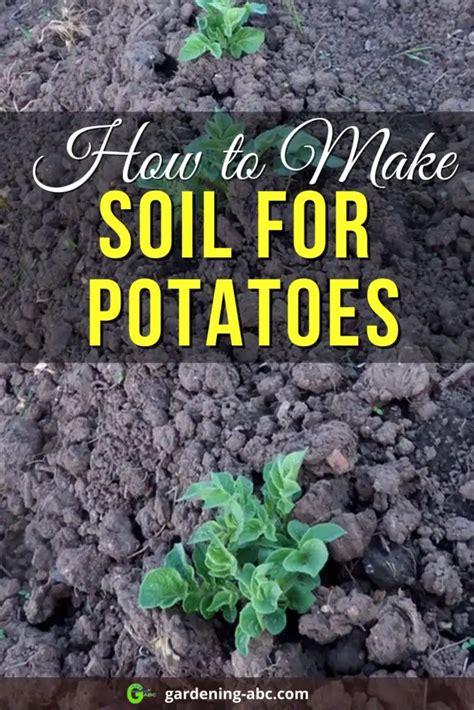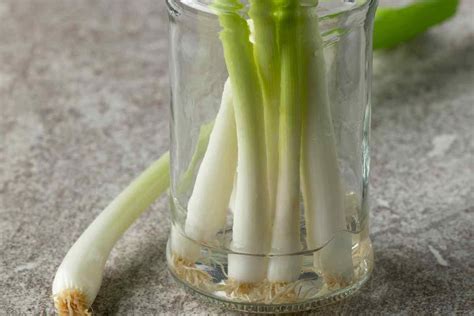Have you ever yearned for a verdant slice of heaven right in your backyard? Picture yourself immersed in a lush oasis, decorated with vibrant green leaves and bountiful harvests. If you find yourself daydreaming about cultivating your own thriving garden, this article is here to guide you towards turning that dream into a reality.
Creating a flourishing spinach garden isn't just about a green thumb – it's about embracing the power of nature and nurturing a thriving ecosystem. By strategically planning and implementing effective gardening techniques, you can transform a humble vegetable patch into a haven bursting with life. Get ready to roll up your sleeves and embark on an exciting journey towards cultivating your very own green paradise.
Awaken the dormant gardener within you as we delve into the secrets of successful spinach cultivation. Discover the hidden potential of your soil, the tricks to ward off pesky pests, and the importance of choosing the right seeds for your desired outcome. From tending to your seedlings with care to reaping the rewards of your patience, this article will equip you with the knowledge and tools needed to turn your garden into a vibrant seascape of emerald spinach leaves.
Planning Your Ultimate Greenery Haven

Creating a flourishing haven for leafy greens requires careful thought and meticulous planning. In this section, we will explore the essential steps to turn your dream of a vibrant spinach garden into a reality. By strategically mapping out your garden layout, considering soil quality, and selecting the ideal spinach varieties, you can set the foundation for a thriving green oasis.
Designing Your Garden Layout
Before digging the first hole, take the time to envision your ideal spinach garden. Consider factors such as available space, sunlight exposure, and potential obstacles within your garden area. Sketch out a rough layout, incorporating pathways, raised beds, or any other desired features to maximize accessibility and aesthetics. By planning the layout in advance, you can optimize the use of space and create a visually appealing arrangement that suits your gardening style.
Soil Preparation
Preparing nutrient-rich soil is crucial for cultivating vigorous spinach plants. Start by testing the pH level of your soil to determine its acidity or alkalinity. Spinach thrives in slightly acidic to neutral soils, with a pH range between 6.0 and 7.0. Amend your soil accordingly by introducing organic matter, such as compost or well-rotted manure, to improve its structure and fertility. Additionally, ensure proper drainage to prevent waterlogged soil, which can lead to root rot and other issues detrimental to your spinach crop.
Choosing the Right Spinach Varieties
With numerous spinach varieties available, selecting the right ones for your garden is essential for a successful harvest. Consider factors such as days to maturity, disease resistance, and flavor profiles when choosing your spinach varieties. Opt for early-maturing varieties if you desire an early harvest, or select varieties known for their resistance to common spinach diseases, such as downy mildew. Furthermore, explore different taste profiles, from tender baby spinach to savoy or flat-leaf spinach, to suit your culinary preferences.
Companion Planting and Crop Rotation
Enhance the overall health and productivity of your spinach garden by implementing companion planting techniques and crop rotation. Companion plants, such as radishes or lettuce, can help deter pests or attract beneficial insects to your garden. Additionally, practicing crop rotation annually can minimize the risk of soil-borne diseases and nutrient depletion. Rotate your spinach crops with unrelated plants, such as tomatoes or peppers, to maintain soil quality and optimize future harvests.
Monitoring and Maintenance
Once your spinach garden is planted, regular monitoring and maintenance are vital to ensure its long-term vitality. Keep a close eye on soil moisture levels, watering consistently to provide adequate hydration without overwatering. Inspect your plants for signs of pests or diseases, promptly addressing any issues to prevent their spread. Additionally, thinning overcrowded seedlings and consistent weed control are crucial for promoting proper air circulation and preventing nutrient competition among your spinach plants.
In conclusion, by thoughtfully planning your ultimate spinach garden, considering factors such as garden layout, soil preparation, variety selection, and ongoing maintenance, you can transform your dream into a flourishing reality. By investing time and effort into the planning stages, you will set the stage for a bountiful harvest of nutritious and delectable spinach.
Choosing the Ideal Location for Your Leafy Green Haven
In this section, we will explore the importance of selecting the perfect spot for growing your verdant leafy greens. Determining the right location for your spinach plants is crucial for their overall health and vitality. By understanding the key factors at play, such as sunlight, soil quality, and protection from the elements, you can ensure a thriving spinach garden.
Sunlight: When considering the placement of your spinach garden, adequate sunlight is a vital aspect to take into account. Spinach plants thrive in areas that receive at least six hours of direct sunlight each day. The availability of sunlight affects the growth rate and nutritional quality of the spinach leaves. Select a spot that offers ample sunlight throughout the day to maximize the potential of your leafy greens.
Soil Quality: The quality of the soil is another crucial factor in determining the success of your spinach garden. Spinach prefers well-draining soil that is rich in organic matter. Assess the soil in your chosen location to ensure it is loose, friable, and has adequate drainage. Regularly enrich the soil with compost or organic matter to provide the necessary nutrients for your spinach plants to thrive.
Protection from the Elements: Consider the protection your chosen location provides from harsh weather conditions. While spinach can tolerate light frosts, extreme cold or strong winds can damage the delicate leaves. Look for a garden spot that offers some protection, such as a fence, wall, or neighboring plants, to shield your spinach from the elements. This will help prevent any unnecessary stress or damage to your leafy greens and promote healthy growth.
Final Thoughts: Choosing the perfect spot for your spinach garden involves careful consideration of sunlight exposure, soil quality, and protection from the elements. By evaluating these factors, you can create an environment that allows your spinach plants to thrive and produce an abundance of nutritious and delicious greens. With the right location, you are one step closer to turning your dream of a flourishing spinach garden into a breathtaking reality.
Preparing the Soil for Optimal Growth

Creating a thriving environment for your beloved green leafy vegetables involves careful preparation of the soil. By ensuring the ideal conditions for growth, you can lay the foundation for a fruitful spinach garden that will exceed your expectations.
- Test the soil pH levels: Before planting your spinach, it is essential to assess the pH levels of the soil. Spinach thrives in slightly acidic to neutral conditions, with a pH range of 6.0 to 7.0. Utilize a pH testing kit to determine the acidity or alkalinity of your soil, and make adjustments accordingly.
- Amend the soil with organic matter: To enhance nutrient availability and soil structure, amend the soil with organic matter such as compost or well-rotted manure. These organic materials improve drainage, promote beneficial microbial activity, and supply essential nutrients that will support the growth of your spinach plants.
- Provide adequate drainage: Spinach prefers well-drained soil to prevent waterlogging, which can lead to root rot and other diseases. Ensure proper drainage by incorporating organic matter and improving the soil texture. Additionally, consider raised garden beds or mounds to enhance drainage.
- Loosen the soil: Loose soil promotes healthy root development and allows for easier penetration of water and nutrients. Prior to planting, loosen the soil using a garden fork or tiller, removing any debris or weeds that may obstruct growth.
- Consider soil temperature: While spinach is a cool-season crop, it requires a moderately warm soil temperature for optimal growth. Aim for a soil temperature of around 50 to 60°F (10 to 16°C) to encourage germination and vigorous growth. If the soil is too cold, consider using mulch or row covers to gently warm the soil and protect young seedlings.
- Practice proper watering techniques: Adequate watering is crucial for spinach growth. Keep the soil consistently moist, but avoid overwatering, as excessive moisture can lead to disease issues. Utilize mulch to retain soil moisture and prevent weed competition.
By implementing these soil preparation techniques, you can create a nutrient-rich environment that promotes optimal growth and ensures a thriving spinach garden for your enjoyment.
Planting and Caring for Your Leafy Green Seedlings
Embarking on the journey of growing your own leafy green vegetables can be an exciting and fulfilling experience. In this section, we will explore the essential steps for successfully planting and caring for your seedlings, helping you nurture them into flourishing plants that will provide you with a bountiful supply of nutritious leaves.
1. Soil Preparation:
- Select a well-draining soil mix for your spinach seedlings, ensuring it is rich in organic matter.
- Loosen the soil and remove any weeds or debris that may hinder the growth of your plants.
- Consider adding compost or aged manure to enhance the fertility and structure of the soil.
2. Sowing the Seeds:
- Choose a suitable location for your spinach seedlings, preferably an area with partial shade.
- Sow the seeds at the recommended depth (usually 1/2 inch) and spacing (typically 4-6 inches apart).
- Water the seeds gently to ensure proper moisture levels, but avoid over-watering, as it can lead to rotting.
3. Providing Proper Care:
- Monitor the soil moisture regularly and water your seedlings when the top inch of soil feels dry.
- Apply a layer of mulch around the plants to retain moisture, suppress weed growth, and regulate soil temperature.
- Thin out overcrowded seedlings to allow enough space for each plant to grow and develop.
- Fertilize your spinach seedlings with a balanced, slow-release fertilizer to provide essential nutrients.
- Protect your plants from pests and diseases by regularly inspecting them and taking necessary preventive measures.
4. Harvesting Your Spinach:
- Once your spinach leaves reach a desirable size, typically 4-6 weeks after planting, they are ready to be harvested.
- Use sharp scissors or garden shears to trim the outer leaves, allowing the inner leaves to continue growing.
- Harvest regularly to encourage continuous growth and ensure a steady supply of fresh spinach leaves.
By following these guidelines for planting and caring for your spinach seedlings, you will be well on your way to establishing a thriving and abundant spinach garden. Remember to stay attentive to your plants' needs and enjoy the rewards of harvesting and savoring your homegrown leafy greens!
Harvesting and Enjoying Your Homegrown Greens

Once your vision of a thriving and flourishing garden has transformed into a reality, you are now ready to reap the delicious rewards of your hard work. Cultivating your very own spinach at home allows you to savor the unmatched freshness and taste that store-bought greens simply cannot replicate. The moment has arrived to immerse yourself in the gratifying experience of harvesting and enjoying the bountiful yield from your lush leafy paradise.
1. Timing is everything: Before you begin the process of harvesting your homegrown spinach, it is crucial to understand the appropriate timing. Spinach leaves are at their peak when they reach a vibrant shade of deep green. Be sure to monitor the growth of your plants and wait until the leaves have reached their maximum size, indicating optimal flavor and nutrient content.
2. Gentle, careful approach: Gently handle your spinach leaves as you harvest them, ensuring minimal damage to the delicate foliage. Avoid tearing or bruising the leaves, as this can affect the taste and quality of the final product. Use a pair of sharp garden shears or scissors to snip the leaves, leaving a few inches of the stem intact to encourage further growth and regrowth.
3. Selective harvest: Rather than harvesting the entire plant at once, opt for a selective approach. Pinpoint the mature leaves that are ready for consumption, starting with the outermost ones. This way, you can enjoy a continuous supply of fresh spinach throughout the harvesting season, allowing the younger leaves to reach their full potential and contribute to the garden's productivity.
4. Washing and storing: Once harvested, it is essential to wash your homegrown spinach thoroughly to remove any dirt or debris. Fill a bowl with cold water and gently agitate the leaves, taking care not to bruise or damage them further. Allow the spinach to air dry or use a salad spinner to remove excess moisture before storing. Transfer the washed and dried spinach in a breathable container, such as a mesh bag or paper towel-lined container, to preserve its freshness and prevent decay.
5. Culinary delights: Finally, it is time to enjoy the fruits of your labor. With your homegrown spinach now at its peak of freshness, there is a multitude of delightful culinary possibilities awaiting you. Whether you opt for a classic spinach salad, sautéed spinach, or incorporporate it into your favorite recipes such as soups, stews, and smoothies, the versatility of spinach will surely elevate your culinary creations to new heights while nourishing your body with its exceptional nutritional value.
The journey from envisioning an abundant spinach garden to relishing in the flavors and benefits of your homegrown greens is one that requires dedication, patience, and care. With each harvest, you will gain a deeper appreciation for the process and a profound satisfaction that comes from nurturing your own vibrant and bountiful harvest.
FAQ
How do I start my own spinach garden?
To start your own spinach garden, you first need to prepare a suitable location in your backyard or balcony. Clear the area of any weeds or grass, and make sure it receives at least 6 hours of sunlight per day. Then, till the soil and remove any rocks or debris. Next, sow the spinach seeds, spacing them about 3 inches apart. Water them gently and keep the soil consistently moist. Finally, be patient and wait for the spinach to germinate and grow!
What are some important tips for successfully growing spinach?
There are a few important tips to keep in mind for successfully growing spinach. Firstly, make sure to choose the right variety for your climate and growing conditions. Secondly, spinach prefers cool weather, so it's best to sow the seeds in early spring or fall. Additionally, spinach needs well-drained soil with a slightly acidic pH. It's also important to keep the soil consistently moist, but avoid overwatering to prevent diseases. Lastly, remember to regularly harvest the spinach leaves to encourage new growth and prevent bolting.
Can I grow spinach in containers or pots?
Absolutely! Spinach can be successfully grown in containers or pots, making it a great option for those with limited space. Choose a deep container with drainage holes, fill it with a well-draining potting mix, and sow the spinach seeds about an inch apart. Place the container in a location that receives at least 6 hours of sunlight per day. Keep the soil consistently moist, and remember to fertilize regularly. Just make sure to choose a compact variety of spinach that is suitable for container gardening.
What are some common pests and diseases that can affect spinach plants?
Spinach plants can be vulnerable to a few common pests and diseases. Some pests to watch out for include aphids, slugs, and leaf miners. To prevent these pests, you can use organic insecticides or set up physical barriers such as netting. As for diseases, spinach can be susceptible to downy mildew, gray mold, and leaf spot. To minimize the risk of diseases, ensure good air circulation around the plants by spacing them properly and avoiding overhead watering. Additionally, removing any infected leaves promptly can help prevent the spread of diseases.
When is the best time to harvest spinach?
The best time to harvest spinach is when the leaves are still young and tender, usually around 4-6 weeks after sowing the seeds. If the leaves are big and have a slightly thick texture, they may be a bit bitter. To harvest, simply snip off the outer leaves with a pair of clean scissors or pinch them off with your fingers. It's best to harvest in the morning when the leaves are still crisp. Regular harvesting will encourage the plants to produce more leaves, giving you a continuous supply of fresh spinach throughout the growing season.
How do I start growing spinach in my own garden?
To start growing spinach in your own garden, you will first need to prepare the soil by tilling it and removing any weeds. Then, choose a sunny spot in your garden and sow the spinach seeds directly into the soil, making sure to space them about 6 inches apart. Keep the soil moist but not waterlogged, and after about 7-14 days, you should start to see the spinach sprouting. Continue to water the plants regularly and fertilize them every few weeks. Harvest the spinach leaves when they reach the desired size, usually around 6-8 weeks after sowing.
What are some common problems or pests that can affect spinach plants?
Spinach plants can be vulnerable to various pests and diseases. Some common problems include aphids, leaf miners, and powdery mildew. Aphids are small sap-sucking insects that can cause damage to the leaves, while leaf miners create tunnels in the leaves, making them look distorted. Powdery mildew is a fungal disease that appears as a white powdery substance on the leaves. To prevent these issues, you can try using natural pest control methods such as introducing beneficial insects or using neem oil. It's also important to practice crop rotation and maintain good air circulation in your garden to prevent the spread of diseases.



